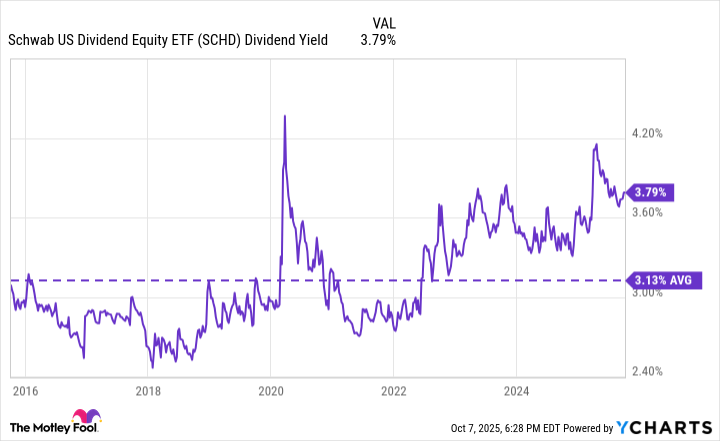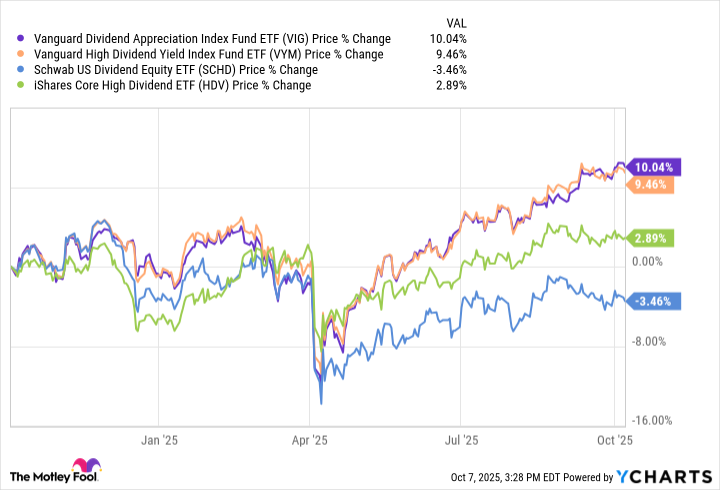Retirees: These 2 Dividend Stocks Could Pay Reliable Income for Years
These companies have been very reliable dividend payers over the past couple of decades.
A stable income stream is the cornerstone of a worry-free retirement. By receiving reliable payments, retirees can focus on enjoying life rather than stressing over expenses. The right investments are crucial in making this possible.
Investing in high-quality dividend stocks can be a great source of reliable retirement income. Realty Income (O 1.12%) and Oneok (OKE 0.63%) have each demonstrated the durability of their dividend payments over many decades. This proven reliability makes them strong options for those seeking consistent income in retirement.

Image source: Getty Images.
Executing the mission
Realty Income has a clear mission. This real estate investment trust (REIT) aims to provide dependable monthly dividends that grow over time. The company has paid 664 consecutive monthly dividends throughout its history. It has raised its payment 132 times since its public market listing in 1994, including for the past 112 quarters in a row (and for more than 30 consecutive years). It stands out for its consistency among income stocks in the real estate sector.
The REIT offers investors an attractive dividend that currently yields 5.5%. That’s well above average (the S&P 500‘s dividend yield is around 1.2%). As a result, investors can generate more income from every dollar they invest in the company.
Realty Income backs its reliable dividend with very durable cash flows. It owns a diversified real estate portfolio (retail, industrial, gaming, and other properties), net leased to many of the world’s leading companies. Net leases provide it with very predictable cash flow because tenants cover all property operating expenses, including routine maintenance, real estate taxes, and building insurance. Meanwhile, the company owns properties leased to tenants in resilient industries. Over 90% of its rent comes from tenants in sectors resilient to economic downturns and isolated from the pressures of e-commerce, such as grocery stores, distribution facilities, and data centers.
The REIT pays out a conservative percentage of its stable rental income in dividends (about 75% of its adjusted funds from operations). That gives it a comfy cushion while enabling it to retain lots of cash to make additional income-generating real estate investments. Realty Income also has one of the strongest balance sheets in the sector, further enhancing its ability to make new investments. It should have no shortage of investment opportunities in the coming years, given the $14 trillion total estimated market value of real estate suitable for net leases across the U.S. and Europe. The company’s growing portfolio enables it to steadily increase its dividend.
A pillar of stability
Oneok has been one of the most reliable dividend stocks in the pipeline sector. The energy infrastructure company has delivered more than a quarter-century of dividend stability and growth. While Oneok hasn’t increased its payout every single year, it has grown it at a peer-leading rate over the past 10 years by nearly doubling its payment. The company currently offers a 6% dividend yield.
The energy company operates a balanced portfolio of premier energy infrastructure assets, backed predominantly by long-term, fee-based contracts. Those agreements provide it with very stable cash flow to cover its dividend. Oneok also has a strong investment-grade balance sheet backed by a low leverage ratio. This rock-solid financial position gives the company the flexibility to invest in organic expansion projects and make accretive acquisitions to grow its platform.
Oneok currently has several high-return organic expansion projects in the backlog, which it expects to complete through mid-2028. This gives it lots of visibility into its future growth. The company has also made several acquisitions over the past few years, which will continue to boost its bottom line in the coming years as it captures additional synergies. It has ample financial flexibility to approve new expansion projects and make additional acquisitions. With demand for energy expected to continue growing, especially for natural gas, the company should have no shortage of investment opportunities. This fuels Oneok’s view that it can grow its dividend by a 3% to 4% annual rate.
Reliable income stocks
For retirees seeking dependable, growing income, Realty Income and Oneok stand out as proven dividend payers. Their stable cash flow and prudent financial management provide confidence that these companies can continue delivering reliable income for years. Those features make them ideal dividend stocks for retirement portfolios.
Matt DiLallo has positions in Realty Income. The Motley Fool has positions in and recommends Realty Income. The Motley Fool recommends Oneok. The Motley Fool has a disclosure policy.




















